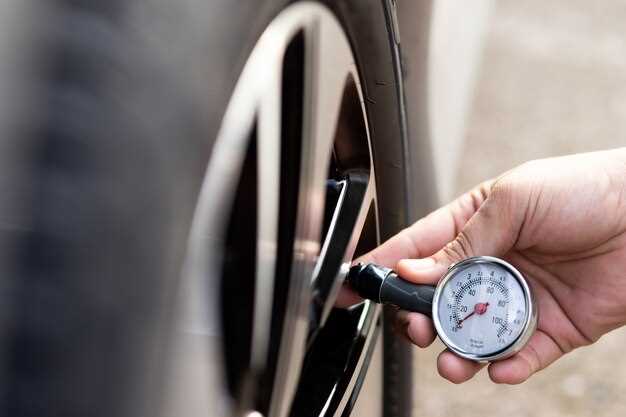
Tires are a fundamental component of any vehicle, playing a crucial role in safety, performance, and efficiency. Their longevity can be significantly impacted by various factors, but one of the most controllable elements is the driving style of the operator. Understanding how your driving habits influence tire wear can lead to more durable tires and ultimately save you money and time.
Many drivers may not realize that specific driving practices can accelerate tire degradation. Aggressive acceleration, sudden braking, and sharp turns can lead to uneven wear and reduced tire lifespan. By adopting a more cautious and deliberate driving style, one can help ensure that tires wear evenly and maintain their integrity for longer periods.
In this article, we will explore various driving habits that contribute to tire longevity, including speed management, proper inflation, and regular maintenance checks. Understanding how each aspect affects tire performance will empower drivers to make informed decisions that extend the life of their tires and enhance overall driving safety.
Adjusting Acceleration and Braking Techniques for Tire Health

Optimizing driving habits can significantly enhance the lifespan of tires. Two major aspects to focus on are acceleration and braking techniques, which directly impact tire wear and performance.
Here are some key adjustments to consider:
- Smooth Acceleration: Rapid acceleration can cause excessive tire wear. Instead, aim for gentle and gradual acceleration to minimize stress on the tires.
- Moderate Speed: Maintaining moderate speeds not only conserves fuel but also reduces the rate of tire wear. Higher speeds increase treadwear due to greater friction.
- Engine Load: Avoid heavy loads and abrupt starts. These practices can lead to uneven tire wear and decreased efficiency.
When it comes to braking, consider the following techniques:
- Progressive Braking: Instead of slamming on the brakes, utilize gradual pressure to slow down. This behavior reduces the sudden impact on tires.
- Anticipate Stops: By anticipating traffic flow and adjusting your speed accordingly, you can minimize harsh braking. This not only conserves tires but also enhances overall safety.
- Resting Your Foot: When driving, keep your foot off the brake pedal when not in use. Continuous pressure can create wear on the tires and brakes unnecessarily.
Implementing these techniques fosters better conservation of tire resources, maximizing their lifespan while maintaining safety on the road. By consciously adjusting acceleration and braking habits, drivers can achieve better tire health, ultimately leading to a more enjoyable driving experience.
Maintaining Proper Tire Pressure to Extend Lifespan

Proper tire pressure is crucial for enhancing the longevity of your tires. Under-inflated tires can lead to increased wear and tear due to excessive rolling resistance, while over-inflated tires can cause uneven wear patterns and compromised traction. Regularly checking and adjusting tire pressure according to manufacturer recommendations is an essential driving habit that contributes significantly to tire conservation.
Optimal tire pressure improves fuel efficiency, which is not only beneficial for your wallet but also for the environment. When tires are inflated correctly, the vehicle handles better, providing a smoother driving experience and reducing the likelihood of premature tire failure. Moreover, maintaining appropriate pressure can enhance overall vehicle safety, as well-tensioned tires are less prone to blowouts.
A good practice is to check your tire pressure at least once a month and before long trips. Additionally, temperature changes can affect tire pressure; therefore, it’s wise to measure pressure when tires are cold. This precaution ensures that your tires remain in ideal condition, ultimately prolonging their lifespan.
In conclusion, adopting a mindful approach to tire pressure is essential for drivers who wish to extend the life of their tires. By making this a regular part of your driving style, you contribute to not only personal vehicle efficiency but also broader environmental conservation efforts.
Avoiding Aggressive Maneuvers and Road Hazards to Minimize Wear
Driving habits play a crucial role in the longevity of tires. One of the most effective ways to extend tire life is by avoiding aggressive maneuvers. Sharp turns, rapid acceleration, and hard braking create excessive friction and heat, which can quickly deteriorate the tire’s rubber compound. By adopting a smoother driving style, you can help maintain optimal tire performance and durability.
Sharp and sudden movements not only wear the tread unevenly but can also strain the sidewalls of the tires. Instead, practice gradual acceleration and deceleration. This technique minimizes stress on the tires while promoting better fuel efficiency.
Additionally, be mindful of road hazards such as potholes, debris, and uneven surfaces. These obstacles can cause immediate damage, leading to punctures or sidewall bulges. Whenever possible, maintain a safe distance from road hazards and approach turns at a controlled speed to avoid sudden impacts. Regularly inspect your tires for any signs of wear or damage, especially after driving in adverse conditions.
Moreover, a considerate driving style not only enhances tire longevity but also contributes to overall vehicle safety. By respecting speed limits and practicing defensive driving, you reduce the likelihood of unexpected maneuvers that can lead to accidents and further tire wear.
In conclusion, mindful driving practices and awareness of road conditions are essential to minimizing tire wear. Adopting a smoother driving style and proactively avoiding potential hazards will ensure that your tires last longer and perform at their best.



